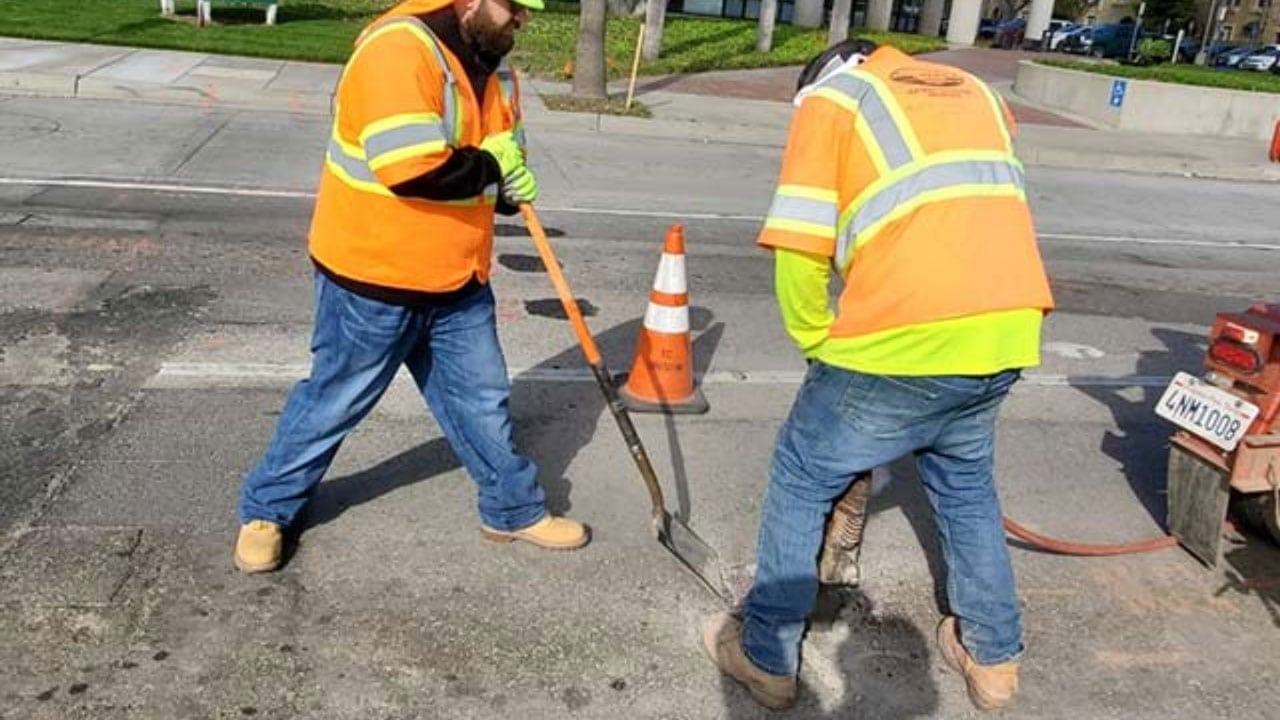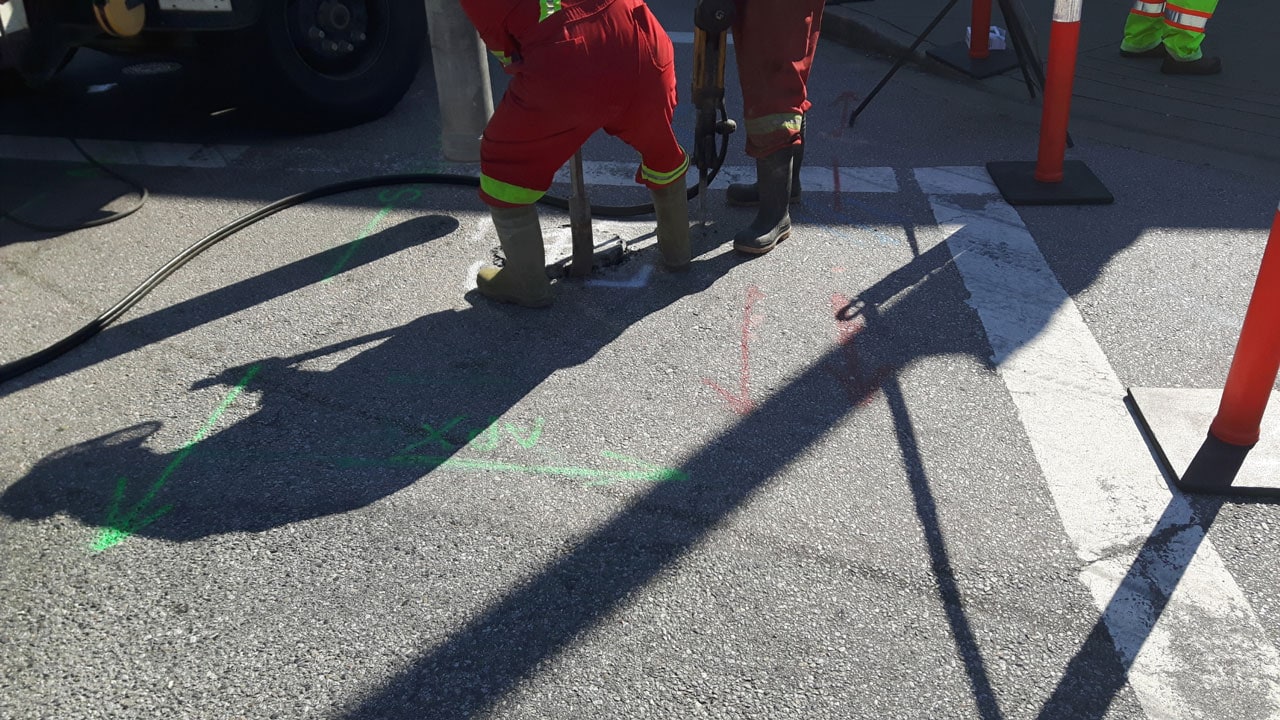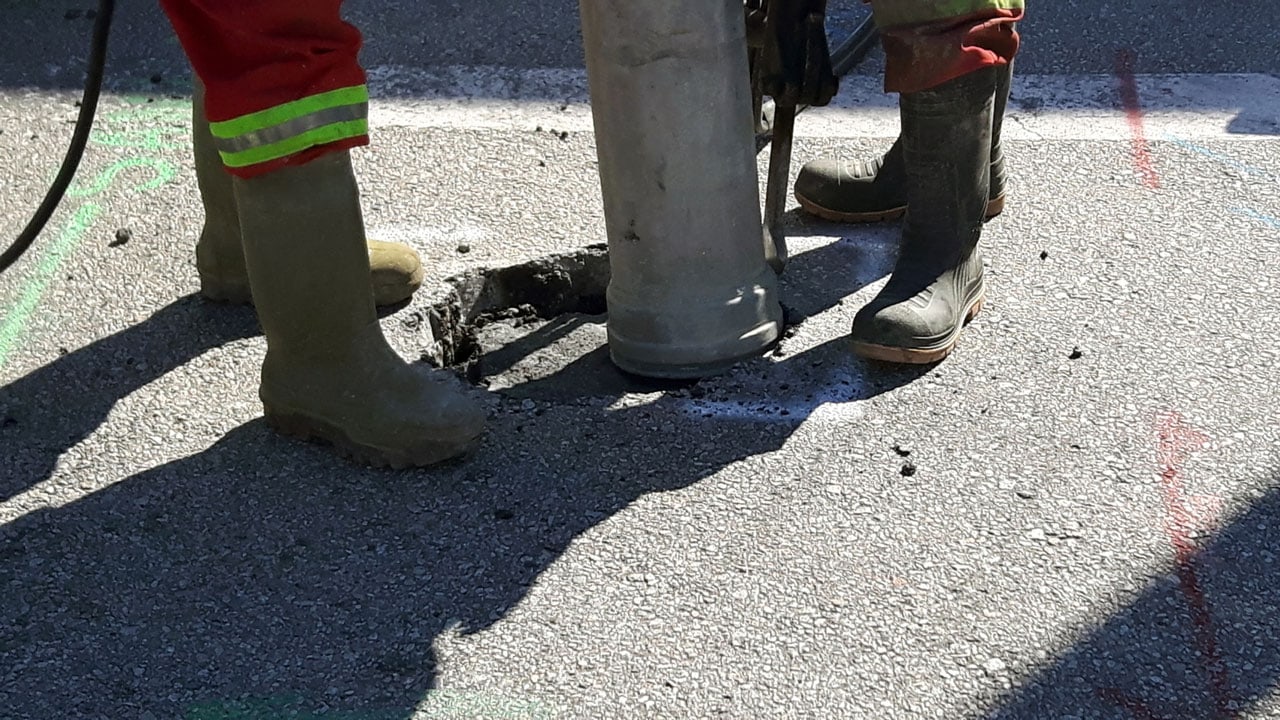The landscape of utility potholing is undergoing a significant transformation, fueled by technological advancements and a growing emphasis on safety and efficiency in the construction industry.
As we look towards the future, emerging technologies and innovations are set to redefine the standards of utility potholing services, ensuring minimal disruption and enhanced safety for bustling city environments and beyond. Here’s what’s on the horizon for utility potholing technology.
Advancements in Potholing Underground Utilities
Utility potholing or vacuum excavation, is a method used to expose underground utilities safely. It involves using pressurized water or air to break up soil, which is then removed using a vacuum system, allowing for visual inspection and identification of buried utilities. Future trends in utility potholing technology are likely to focus on enhancing efficiency, accuracy, safety, and environmental sustainability. Here are some potential trends:
Ground Penetrating Radar (GPR)
GPR technology has become a staple in GPR underground utility locating, providing a non-intrusive means to visualize underground utilities without digging. By emitting radio waves into the ground and analyzing the reflected signals, GPR can detect the location and depth of various types of utilities, including non-metallic pipes and cables, which traditional metal detectors cannot locate. This technology has significantly improved the accuracy of utility maps and reduced the likelihood of accidental strikes.
GPS and GIS Integration
The integration of Global Positioning System (GPS) and Geographic Information Systems (GIS) has revolutionized how utility locations are recorded and accessed. Utility locators use GPS to mark the exact coordinates of underground utilities, and this data is then inputted into GIS software, creating detailed and interactive maps. This integration allows for real-time data updates and sharing among project teams, ensuring everyone has access to the most current utility information.
Electromagnetic Locators
Electromagnetic locators have been refined to provide greater precision in detecting metallic utilities like gas lines and water pipes. Modern locators can differentiate between different types of metal and provide depth estimates, which help in planning excavation with higher confidence and lower risk.
Hydro and Air Vacuum Excavation
Hydro vacuum excavation and air excavation are non-destructive digging technologies that use high-pressure water or air to remove soil, revealing underground utilities without damaging them. These methods are particularly effective in sensitive areas where traditional excavation methods could cause significant damage. By providing a clear view of the subsurface, these techniques help avoid costly repairs and project delays associated with utility strikes.
Artificial Intelligence and Machine Learning
Artificial intelligence (AI) and machine learning are beginning to make inroads into utility locating. These technologies can analyze vast amounts of data from previous utility locating operations, identifying patterns and predicting the likelihood of utility presence. This predictive capability can help guide excavation efforts more effectively and can even suggest the most appropriate locating methods for a given area.
AI is starting to make its mark in the utility potholing domain, offering enhanced accuracy in locating underground infrastructure. By analyzing vast amounts of data, AI can predict the exact location of subsurface utilities, reducing the reliance on outdated maps and traditional methods.
Drones and Aerial Imaging
Drones equipped with sensors and imaging technology are being used to survey large or inaccessible areas, providing valuable data that can be used in utility locating. Aerial imaging can identify potential underground utility paths and help plan more targeted and efficient ground-based locating efforts.
Internet of Things (IoT)
IoT technology is being applied to monitor the condition and status of underground utilities in real-time. Sensors placed on utility lines can send alerts if they detect issues like leaks or breaks, allowing for immediate action and reducing the risk of accidental utility strikes during excavation projects.
Enhanced Safety and Training
With the adoption of advanced technology, the emphasis on enhanced safety and comprehensive training for project managers and construction workers has never been higher. Regular updates to safety protocols, driven by technological advancements, ensure that teams are equipped to handle new equipment and methods effectively.
Advancements in technology have also led to improved safety measures and training programs for utility locating professionals. Virtual reality (VR) and augmented reality (AR) are being used to simulate utility locating scenarios, providing hands-on experience in a safe and controlled environment. This training helps locators identify utilities more accurately and safely in the field.
Directional Drilling and Smart Sensors
Directional drilling equipped with smart sensors allows for precise underground utility installation with minimal surface disruption. This method, combined with real-time monitoring systems, ensures the accurate placement of utility lines while avoiding accidental damage to existing infrastructure.
Integration with Smart City Initiatives
As urban areas evolve into smart cities, utility potholing or vacuum excavation services are integrating with broader smart infrastructure projects. This includes leveraging IoT devices and sensors to monitor and map underground utilities continuously, ensuring regular maintenance projects are conducted with up-to-date information.
Damage Information Reporting Tool (DIRT) Report
This tool, developed by the Common Ground Alliance, is becoming increasingly important in identifying trends in accidental damage and enhancing communication among damage prevention stakeholders. By analyzing DIRT data, utility service providers and construction teams can develop better strategies for damage reductions.
Private Utility Locating Services
The rise of same-day private utility locating services reflects the construction industry’s need for speedy and accurate utility detection. These services play a pivotal role in fast-paced construction environments, offering rapid responses and updated utility locations to prevent accidental damage.
Leak Detection and Environmental Considerations
New potholing technologies incorporate sophisticated leak detection systems, allowing utility owners and operators to address leaks and vulnerabilities proactively. This not only safeguards the underground infrastructure but also protects the environment from potential contaminations.
Collaboration Platforms and Data Integration
Future trends also point towards increased collaboration between utility owners, project managers, and subsurface utility engineers. Platforms that facilitate real-time data sharing and integration can significantly reduce project delays and ensure all parties have access to accurate utility information.
The future of utility potholing is bright, with advancements in technology paving the way for safer, more efficient, and less disruptive excavation processes. As the industry continues to evolve, staying abreast of these trends will be crucial for anyone involved in construction projects and underground utility management.
Partner with Util-Locate for Cutting-Edge Utility Potholing Services
At Util-Locate, we are at the forefront of integrating these advanced technologies and trends into our utility potholing services in Southern California. Our commitment to providing accurate, efficient, and safe utility locating solutions ensures your construction projects proceed without unforeseen disruptions or costly accidents.
Reach out to Util-Locate, and experience the future of utility potholing today, where innovation meets precision and safety!




